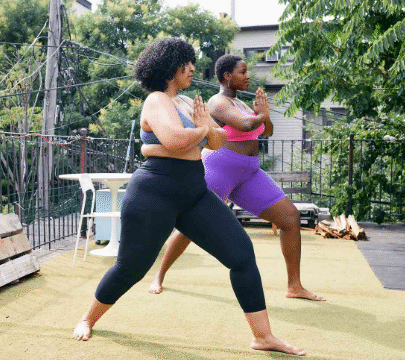In the rush of modern life, it can be easy to overlook the simple act of breathing. Yet breathing is not just a physical necessity; it is a powerful tool for calming the mind, reconnecting with the present moment, and cultivating overall well-being. Mindful breathing is a practice that invites us to slow down, notice the flow of air in and out of the body, and cultivate a sense of ease. It does not require special equipment, a quiet retreat, or even long hours of practice. With gentle attention and consistency, mindful breathing can become a natural part of daily life.
The first step in practicing mindful breathing is to simply notice your breath. There is no need to change it or make it deeper. Take a moment to observe the way air enters your nose or mouth, fills your lungs, and leaves your body. Notice the rise and fall of your chest or belly. This initial step is about awareness rather than control. By paying attention to the breath, you bring your mind into the present moment and create a gentle anchor amid the busyness of life.
A helpful approach is to find a comfortable position. You may choose to sit on a chair with your feet on the ground, lie down on a bed or mat, or even stand while allowing your body to feel relaxed yet upright. The key is to feel supported while maintaining alertness. Posture plays a role in how easily the breath flows and how present you feel. Gentle relaxation of the shoulders, softening of the jaw, and releasing tension in the body can make breathing more natural and enjoyable.
As you focus on your breath, you may notice the mind wandering. This is normal and expected. Thoughts, memories, or plans may arise, and at times it may feel difficult to remain attentive. The practice of mindful breathing is not about eliminating thoughts but about returning gently to the breath each time you notice the mind has wandered. This repeated return is the core of the practice. Each moment of redirection strengthens your ability to be present and cultivates patience and kindness toward yourself.
Counting the breath can also be a helpful technique. Inhaling slowly, you might count one, and on the exhale, count two, continuing up to ten and then returning to one. This gentle counting provides a focus for the mind, making it easier to remain attentive. However, counting is optional, and the practice can be equally effective simply by observing the natural rhythm of the breath. The key is consistent awareness, not perfection.
Mindful breathing can be integrated into daily activities. You do not need to set aside a long meditation session to practice. Breathing mindfully while walking, waiting in line, or washing dishes can bring pockets of calm into ordinary moments. These small instances of awareness gradually build resilience and help you respond to life with greater clarity and calm. Even a single mindful breath during a stressful moment can shift your perspective and reduce tension.
The breath can also serve as a mirror for emotions. When you feel anxious, frustrated, or sad, the breath often becomes shallow or irregular. Observing this without judgment allows you to understand how your body reflects emotional states. Taking slow, intentional breaths can create a sense of stability and ease, offering support as you navigate difficult feelings. The breath acts as a gentle companion, reminding you that you can meet your emotions with awareness rather than resistance.
Visualization can enhance the experience of mindful breathing. You might imagine inhaling calmness and exhaling tension, or picture the breath moving through the body like a wave, gently rising and falling. Visualization can make the practice more vivid and engaging, and it often encourages a deeper sense of relaxation. The imagery does not need to be elaborate; even simple mental pictures can guide attention and deepen the sense of presence.
Consistency is more important than duration. Even a few minutes of mindful breathing each day can have a meaningful impact. It is better to practice briefly and regularly than to aim for long sessions that are difficult to maintain. By weaving mindful breaths into your daily routine, you gradually create a habit that naturally supports calm, clarity, and resilience. Over time, the mind and body learn to respond to the breath as a source of grounding and comfort.
Mindful breathing can also be paired with gentle body awareness. Noticing how your shoulders, chest, and abdomen move with each breath enhances the connection between body and mind. This awareness encourages a sense of embodiment, helping you feel more rooted and present. Feeling the air enter and leave, sensing the subtle movements in the torso, and observing the flow of the breath through the body enriches the practice and deepens its calming effects.
Another way to practice mindful breathing with ease is to cultivate curiosity rather than expectation. Some days the mind may feel restless, and the breath may seem shallow or uneven. Instead of judging the experience, simply notice it with interest. This attitude of gentle curiosity fosters acceptance and reduces tension, making the practice feel more approachable. Each breath becomes an opportunity to learn about yourself and cultivate patience and self-compassion.
It is also helpful to create small rituals that support mindful breathing. Perhaps you take a few conscious breaths before meals, before starting work, or before going to bed. These brief pauses create structure and signal to your mind and body that it is time to be present. Over time, these intentional moments of awareness accumulate, strengthening the mind’s capacity for calm and focus.
Breathing can also support emotional balance. When faced with stress or conflict, taking a few mindful breaths helps to regulate the nervous system. The simple act of slowing down the inhale and exhale can reduce feelings of tension and agitation, allowing for more thoughtful and measured responses. Mindful breathing becomes a tool for navigating challenges with composure and clarity.
Finally, it is important to approach the practice with kindness toward yourself. Mindful breathing is not about achieving a particular state or performing perfectly. It is about showing up, observing, and gently returning attention when the mind wanders. Each breath is an opportunity to practice presence, patience, and self-compassion. Over time, these small acts of awareness create a profound sense of ease and resilience.
Practicing mindful breathing with ease transforms a simple, natural act into a source of calm and clarity. It does not require complex techniques or special conditions. By noticing the breath, returning gently when the mind wanders, and integrating awareness into everyday life, you cultivate a foundation for well-being that is accessible at any moment. Mindful breathing teaches that peace is always available, flowing with each inhale and exhale, ready to support you wherever life takes you.
Through regular practice, mindful breathing becomes more than a meditation technique. It becomes a companion, a gentle reminder that calm is always within reach. By embracing the simplicity of observing your breath, you open the door to presence, emotional balance, and a deeper connection with life itself. Each mindful breath is a step along the path to greater ease, serenity, and self-awareness, inviting you to live more fully in the moment.






